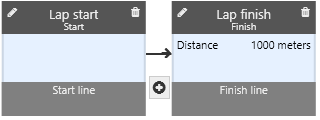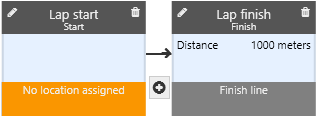This is an old revision of the document!
Ex. Teams and Relays
If your event contain races for teams (such as relays) you need to set up the BBT timing software accordingly.

'Teams and relays' (and in most cases also 'Loops and laps') for the event is enables in the 'Event setup' menu:

Note: Only use the loop feature if each member of a team is competing the same lap (same distance and type of race). Thus, a “loop setup” does not work for a triathlon relay, where each team member is doing a different leg.

BBT can handle multiple types of “Team and relay”. At the moment the following combinations are available for use.
Normal: Treat teams as individuals
This is the default setting.
Each team is treated as an individual, having it's own race number and tags. The team and it's members are completely independent.
One tag per team (single tag/depeche relay)
Each team share one chip/tag. This tag is passed from one team member to the next each time one lap is completedalong to the next. Each participant needs to race one lap, in the order they are listed on the team. Often this is used for relays where a physical depeche (with one of more tags fitted) are passed from one participant to the next, until everyone has completed their lap.
On the team entry, all recorded laps will be listed. Furthermore, the first lap is copied to the first team member entry, the second lap is copied to the second team member entry etc.
If both start and finish timing units are used, the transition time between two participants is computed.
Setup: The race has to be configured as a lap event with a lap count that matches the number of team members.
One tag per team member: Start and finish lines
Each participant on the team have their own tag as if they were racing individually. However, only one is allowed to be on the course at any given time.
There are physical timing units in place for recording the start and finish times of each lap. When a given team member is racing, his time starts when crossing the start line and stops again when crossing the finish line. The participants may race in any order, and even multiple laps in a row for the same person.
The transition time to the next participant is included in the total team result, but not in the individual lap times.
Setup: The event has to be configured as a lap event with a Start timing point, and a Finish timing point for each lap. Any lap count/completion mode may be used.
One tag per team member: Finish line only
This is similar to the above, except that there is not a timing unit to record the start times (and indirectly, the transition times). Only a single physical line exists, which is used to record the finish time of each lap.
Instead of having a physically recorded start time, the finish time of the previous team member is used as the start time for the next.
Setup: The event has to be configured as a lap event with a Start timing point, and a Finish timing point for each lap. The Start point does not have to be tied to any timing unit/location, but needs to be present in order for the individual results to work properly. Any lap count/completion mode may be used.
One tag per team: Sum of best times
Each participant on the team have their own tag as if they were racing individually. They may start together or at different times.
The team finish time is computed as the sum of the individual finish times of the X best team members. For example with a team of 4, the team result could be computed as the sum of the best 3.
The team will only have finish times computed. Splits and laps will not be computed on the team.
Team Time Trial
Example: A team of 4 riders start at the same time and the 3rd rider sets the team time. Both numbers are configurable.
Each team member have their own tag, and will get their individual times computed as usual, including splits, laps etc.
The resulting team time will be the 3rd (or otherwise set) best time of the team members. This applies to not only the finish, but also any split or laps during the race. If the team does not have three riders passing a point, they will not get a time recorded at that point (including the finish line).
To speficiy that the last rider counts, regardless of the team size (which might vary among the teams), set 0 as the parameter.
All riders will normally have the exact same start time (i.e. wave start or fixed time trial start).


